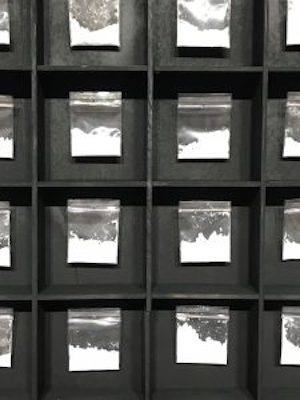Since 1993
How to Beat a Drug Trafficking Charge: The “Constructive Possession” Defense

By: John Guidry
I get it. People do things they shouldn’t do. But, taking a picture or video while doing it seems like you’re pushing your luck. Again, I get it. Today’s real-life case should serve as a gentle reminder that even borderline shady photography may cause trouble, so, I recommend you not document shenanigans with your iPhone. Just saying.
So today, we’re going to take a dive into the legal concept known as “constructive possession.”
Charged with Drug Trafficking in Orlando? If the drugs weren’t on your person, the State faces a high burden of proof. Call my office to discuss the “constructive possession” defense. Call John Guidry: (407) 423-1117
The real life case is Dion Johnson v. State of Florida, 2019 Fla.App.Lexis 18806 (Fla 1st DCA 2019). Johnson was sent to prison for 15 years for drug trafficking. A picture on his phone sealed his fate. Here’s what happened:
The SWAT team executes a search warrant of a house. Several people in the house during the search. One of these folks was Dion Johnson. We know that Johnson did not own or rent the home, he was just visiting.
At trial, the prosecutor called a witness who testified that drugs were sold from this house, and they testified that even Johnson was selling drugs from this home, but the witness couldn’t say what kind of drugs Johnson was selling (I cannot believe this evidence made it to trial, but that’s a topic for another day, in general, see Austin v. State, 44 So.3d 1260 (Fla. 1st DCA 2010)).
When the SWAT team arrived, Johnson was in the living room. Inside one of the bedrooms, the SWAT team found lots of substituted cathinones (bath salts). They found so much bath salts that it constituted the crime of trafficking in bath salts.
Oh, and I left out one important detail. The police found Johnson’s phone in the home. On his phone, they found a picture taken in the kitchen two days prior. This picture showed six baggies of “something similar to bath salts”, and the baggies were sealed in the same manner as the bath salts found in the bedroom.
Yes, this picture closed the deal. Johnson was found guilty of drug trafficking and given 15 years in prison.
To convict Johnson, the state needed to prove what we call “constructive possession”. Whole books (well, chapters) have been written on this concept, so allow me to oversimplify a bit: basically, when drugs are found in a place with multiple people around–the prosecutor has the burden of linking these drugs to you by proving with independent evidence (a) that you knew of the presence of the drugs and (b) you had the ability to maintain dominion and control over the drugs.
Let’s apply this constructive possession analysis to Johnson (stay with me here, I realize I’ve exceeded my multi-syllable legal word limit):
How did the state prove Johnson (a) “knew of the presence of the bath salts?”
Well, they didn’t. The appellate court explained that, after reviewing the trial transcripts, “the State offered no evidence connecting [Johnson] to the bedroom in which the cathinones were located. It is undisputed that [Johnson] was in the living room when law enforcement arrived and that other individuals were in the house at the time.” id. at 6.
The appellate court recognized that it was the phone pic that convicted Johnson, noting that “the primary piece of evidence relied upon by the State was the photograph found on Appellant’s phone.” id. at 7. As the title of this article suggests, a phone pic may get you 15 years of prison. But the appellate court wasn’t buying into the significance of the pic, reasoning that “not only was the photograph taken two days prior to the search, but, according to the evidence, it was taken in the kitchen, not in the bedroom where the drugs at issue were found. . .” id.
This would be a good time to remind you that merely being in a house where drugs are found is not enough to convict. The state must present independent evidence linking the defendant to the drugs. Typically, this independent evidence comes in two flavors: (1) forensic evidence like fingerprints on the baggies, or (2) testimony from witnesses or admissions from the defendant. In Johnson’s case, they had neither.
The court threw out Johnson’s drug trafficking conviction and his 15-year prison sentence, explaining that “we reject the State’s argument that the photograph constitutes independent proof that Appellant had knowledge of the substituted cathinones found in the bedroom. Nor does the photograph amount to independent proof that Appellant had control over the drugs for which he was convicted of trafficking. ” id. at 9.
John’s Takeaways
- To convict you of a drug crime where the drugs are not on your person, the State must prove constructive possession.
- This requires independent evidence that you both knew about the drugs and had the ability to control them.
- Your mere proximity to drugs found in a shared space is not enough to prove guilt.
- Even seemingly powerful evidence, like a photo on a phone, can fail to meet the State’s high burden of proof when scrutinized by an experienced attorney.
The moral of the story is simple: please resist the urge to document shenanigans on your iPhone. But if it’s too late for that advice and you’re already facing charges in Orange, Seminole, Osceola, Lake, Brevard, or Volusia County, call my office. I have been picking apart the State’s evidence in complex drug cases like this since 1993.

About the Author, John Guidry II
John Guidry II is a seasoned criminal defense attorney and founder of the Law Firm of John P. Guidry II, P.A., located in downtown Orlando next to the Orange County Courthouse, where he has practiced for over 30 years. With more than three decades of experience defending clients throughout Central Florida since 1993, Guidry has successfully defended thousands of cases in Orange, Seminole, Osceola, Brevard, Lake, and Volusia counties. He has built a reputation for his strategic approach to criminal defense, focusing on pretrial motions and case dismissals rather than jury trials.
Guidry earned both his Juris Doctorate and Master of Business Administration from St. Louis University in 1993. He is a member of the Florida Bar and the Florida Association of Criminal Defense Lawyers. His practice encompasses the full spectrum of Florida state criminal charges, with a particular emphasis on achieving favorable outcomes through thorough pretrial preparation and motion practice.
Beyond the courtroom, Guidry is a prolific legal educator who has authored over 400 articles on criminal defense topics. He shares his legal expertise through his popular YouTube channel, Instagram, and TikTok accounts, where he has built a substantial following of people eager to learn about the law. His educational content breaks down complex legal concepts into accessible information for the general public.
When not practicing law, Guidry enjoys tennis and pickleball, and loves to travel. Drawing from his background as a former recording studio owner and music video producer in the Orlando area, he brings a creative perspective to his legal practice and continues to apply his passion for video production to his educational content.








